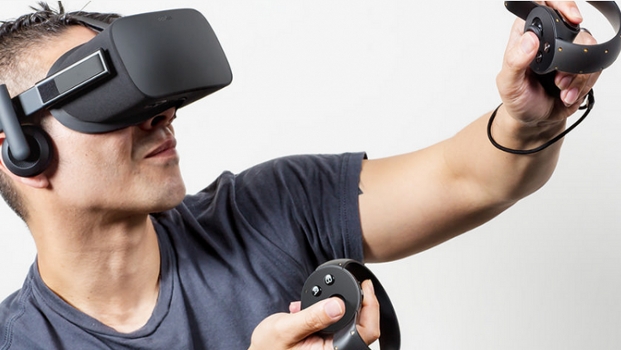So, what is virtual reality? The goal is to alter a human’s perception through virtual systems. Basically, the sensory information appears so realistic to the brain that it is tricked into seeing the virtual as reality.
Consumer adoption of the technology is still in its early stages, but, as innovations pick up pace, more businesses are identifying ways to use VR. Here are some of the fields that have already benefitted.
Automotive
Virtual reality in the automotive industry has changed processes for design, safety and purchasing. The realistic elements of VR allow designers and engineers to examine how a car would look and function without having to build multiple models. Replicating the outside environment virtually also allows for safety trials to be performed on vehicles without exerting the time and energy it takes to run actual tests.
Major brands such as Ford, Volvo and Hyundai are using VR not only for the building process, but also in sales. Entire vehicle lines are available to customers who can do everything from trying out different features to test driving. The need for dealership showrooms could be obsolete with the use of virtual reality technology.
Healthcare
Using realistic virtual environments or virtual models of human anatomy, healthcare professionals can gain insight into what they’ll experience before actually working on a real body. This is useful not only for students, but also for experienced professionals who are performing new or high-risk procedures.
Surgeries can now be viewed from 360 degrees and in real time from all around the world with VR apps such as Medical Realities. Not only can surgeries be viewed with VR, but robotic surgery can now be performed with the technology.
The opportunity for decentralised patient care is also incredibly useful. Virtual reality applications are being designed to learn about patients and examine them in the same way a healthcare professional would. The time and revenue saved from such care could be significant.
Tourism
Virtual reality allows for guided tours of any place around the world. Pegged to advance the tourist industry, people can now ‘try before they buy’ destinations. This will especially help smaller and less well-known places, as travellers can observe what each destination has to offer.
Travel and hospitality firms are also able to showcase destinations and accommodations. The interactive technology allows potential guests of a hotel or resort to explore and experience the grounds before booking. Some firms have gone so far as to recreate the environment of the accommodation by using real stimulants (wind, aromas, etc.) on the potential client during the virtual experience.
The collaboration between Thomas Cook and Samsung Gear VR is one such example, offering the realistic presentation of Thomas Cook locations around the world. The endeavour brought in nearly £12,000 and a 40% return on investment within the first three months.
Architecture
Similar to vehicle engineers, virtual reality has the potential to change the way architects design buildings. Architects can experiment with all aspects of a building such as lighting, material and layout, while their customers can take virtual tours of their new home or building and understand every detail of how it will look and feel.
Contractors and builders will also have a better understanding of what is expected for the design process. Editing the design before and during building can save mass amounts of money and ease the complications of communication.
Retail
VR allows retail stores to showcase everything from different furniture models to multiple shades of a blouse without having the product on-site. It also enables customers to test products before purchasing, which has the additional benefit of offering retailers insight into consumer behaviour.
Social shopping is a virtual reality method set to emerge within the next few years that will be carried out from the comfort of the consumer home. The shopping experience will be tailored to the consumer and even allow for clothes to be tried on once a body scan has been performed.
The extra information and interaction provided to consumers will lead to higher satisfaction and overall purchasing.
Aerospace
The aerospace industry is becoming more immersive as VR technology allows every stage of the building and maintaining process to be a collaborative effort. The interactive capabilities support communication and improve understanding between employees in varying departments.
Designers, engineers and manufacturers are able to create products at a much faster pace with the help of product behavior-testing and visualisation. A strong relationship between departments is possible due to the visualisation properties of VR, helping promote an understanding at all stages of build and design. Pilots, grounds controllers, service workers and engineers can also maintain products more efficiently with this communication gap bridged.
IDG News Service








Subscribers 0
Fans 0
Followers 0
Followers